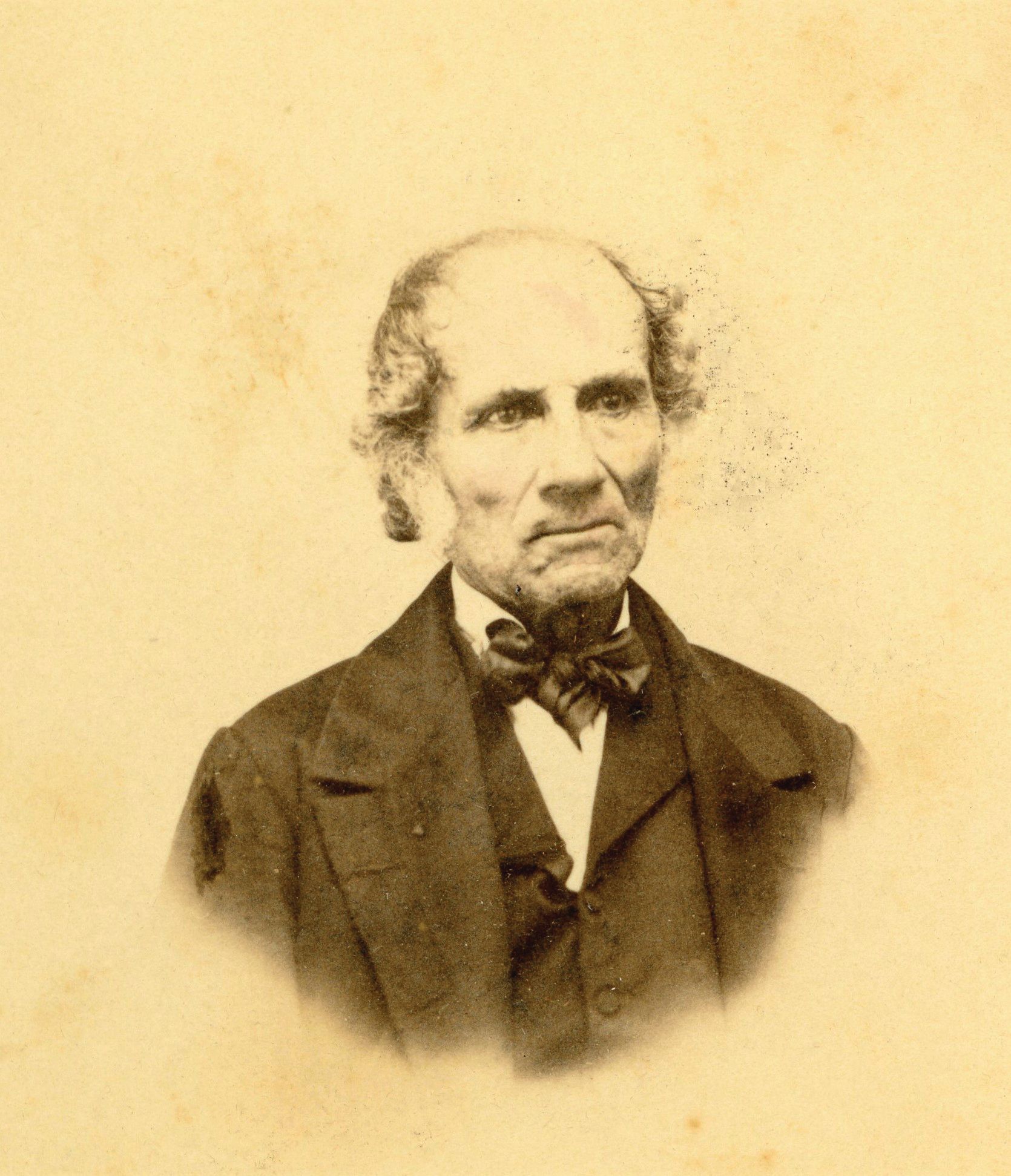A Most Historic Family
by Diana Loski

Henry Culp (1804-1886)
(Adams County Historical Society)
The man who owned Culp’s Hill during the battle was the benevolent Henry Culp, who was sixty years old during the fight on his property. He was born on July 22, 1804 to Peter and Elizabeth Culp. Henry’s grandfather was Christophel Culp.1
Christophel, the original Gettysburg man who brought the Culp family to the area, was one of five brothers who emigrated from northern Germany to Pennsylvania. Born in 1727 in Prussia, he boarded a ship for America in 1759. He joined his three older brothers, who came to Berks County, Pennsylvania as early as 1707 – in answer to William Penn’s invitation for those seeking religious freedom. The original Culps, or Kolbs, followed the Mennonite faith.2
Christophel married Maria Catherine Leise, who was also born in Germany. Five sons were born to the couple: Christophel Jr., Peter, Christian, Mathias, and Stephen.3
He lived to the age of 83, and outlived his wife by two years. He died in 1809 and is buried in Evergreen Cemetery.5
In 1798, Christophel’s second son, Peter, purchased the farm from his father, located on the eastern side of the eponymous hill. Peter, who was born in Berks County in 1766, married Elizabeth Reiss, who was fourteen years his junior. They married in 1787. Seven children were born to the couple: Peter Jr., Marie Catherine, Susanna, Henry, William, Jacob and Hannah. Mrs. Culp was known affectionately as Aunt Polly to the extended members of the Culp family.6

The Henry Culp Farm, Gettysburg
Peter’s younger brother, Christian, also lived in the area, and with his wife, Barbara, had six children: John, George, Henry, Esais Jesse, Daniel, and Eliza. Henry, the son of Christian, is sometimes confused with Henry, the son of Christophel, and the owner of Culp’s Hill in 1863. Christian’s posterity, however, also made a name for themselves during the Civil War.
The younger Henry Culp, the third son of Christian, was a blacksmith. He married Charlotte (Nettie) Weaver. The couple had six children: Ida, Gertrude, Charlotte, Robert, Samuel, and Levi.7
Christian’s fourth son, Esais Jesse, married Margaret Sutherland, an English immigrant. They labored as tailors in town, and had four surviving children of eleven, two sons and two daughters: William, John Wesley, Barbara Anna, and Julia. It is Wesley Culp who is famous (and infamous to the citizens of Gettysburg at the time) who fought at the Battle of Gettysburg on the side of the Confederacy. He was a member of the 2nd Virginia Infantry, and was killed on his father’s cousin’s property, Culp’s Hill, on the morning of July 3, 1863. Jesse and Margaret had died before the war, so they were spared any repercussions for their son’s choice. Their older son, William, fought for the side of the Union in the war, in the 87th Pennsylvania. Another cousin, David Culp, a plasterer by profession, also fought in the 87th.8
Another Culp cousin met with an untimely fate at Gettysburg.
James Culp, age 17 in 1863, was the son of Daniel and Mary Elizabeth Paxton Culp. He was a nephew of Esais Jesse and first cousin to William and Wesley Culp. James was too young to enlist in the army during the war – he was just fourteen when Fort Sumter was attacked. He was, however, present during the battle and, like most young people, fascinated with the detritus of the fight. In September 1863, James found an unexploded shell and began to tamper with it, trying to empty its gunpowder. It suddenly exploded, killing the boy instantly. He too is buried in Evergreen Cemetery.9
Unlike his less affluent kin, Henry Culp, the farmer who owned Culp’s Hill, was one of Gettysburg’s wealthiest citizens. Little is written or remembered about him, except that he and his wife, the former Anna Raffensperger, were kind and friendly people. They attended the St. James Lutheran church, like many other members of the family, leaving their Mennonite roots behind in Berks County. Anna Culp’s obituary reads in part that “ the hospitable home of Mr. & Mrs. Culp was enjoyed by all who knew them.” Four of their eight children survived to adulthood: Mary, Rufus, Calvin, and Edward.10
Henry Culp died in 1886, and Anna followed in 1896. Both are buried in Evergreen Cemetery. During their last years, they moved from the farm into town.
The National Park Service purchased some of the acreage of Culp’s Hill in order to preserve the battlefield, in 1896. In 1910, the government purchased more land that comprised Culp’s Hill, over forty acres in all. The Culp farm still stands at 301 Middle Street, looking much as it did in the summer of 1863.11
In addition to the farm and famous hill, there remains a large posterity of Culps in Pennsylvania and beyond. They are the result of five brothers who dared to make the voyage across the sea three centuries ago for life in a new land, creating their own unique history.

John Wesley Culp, CSA
(National Park Service)
Sources: 1850 U.S. Census, Ancestry.com. Culp, Charles Curtis. Historical Background of Culp’s Hill. Published 1954. Copy, Adams County Historical Society (hereafter ACHS). Culp Family Tree, Ancestry.com. Culp Family File, ACHS. Culp File, Gettysburg College Archives, Gettysburg, PA. Letter, Elwood Christ to David Culp, 6 Sep. 2000, ACHS. McPherson, B.F. History of Evergreen Cemetery. Private publisher, copy ACHS. Obituary of Anna Culp, 1896, Culp Family File, ACHS.
End Notes:
1. Culp Family Tree, Ancestry.com.
2. Culp, Charles C. Historical Background of Culp’s Hill.
3. Ibid.
4. Culp File, Gettysburg College Archives.
5. McPherson, History of Evergreen Cemetery.
6. Letter, Elwood Christ to David Culp, 6 Sep. 2000.
7. Culp Family File, ACHS.
8. 1850 U.S. Census, Ancestry. Culp Family File, ACHS.
9. McPherson, B.F. History of Evergreen Cemetery.
10. Obituary of Anna Culp, 1896.
11. Culp, Charles Curtis. Historical Background of Culp’s Hill.

